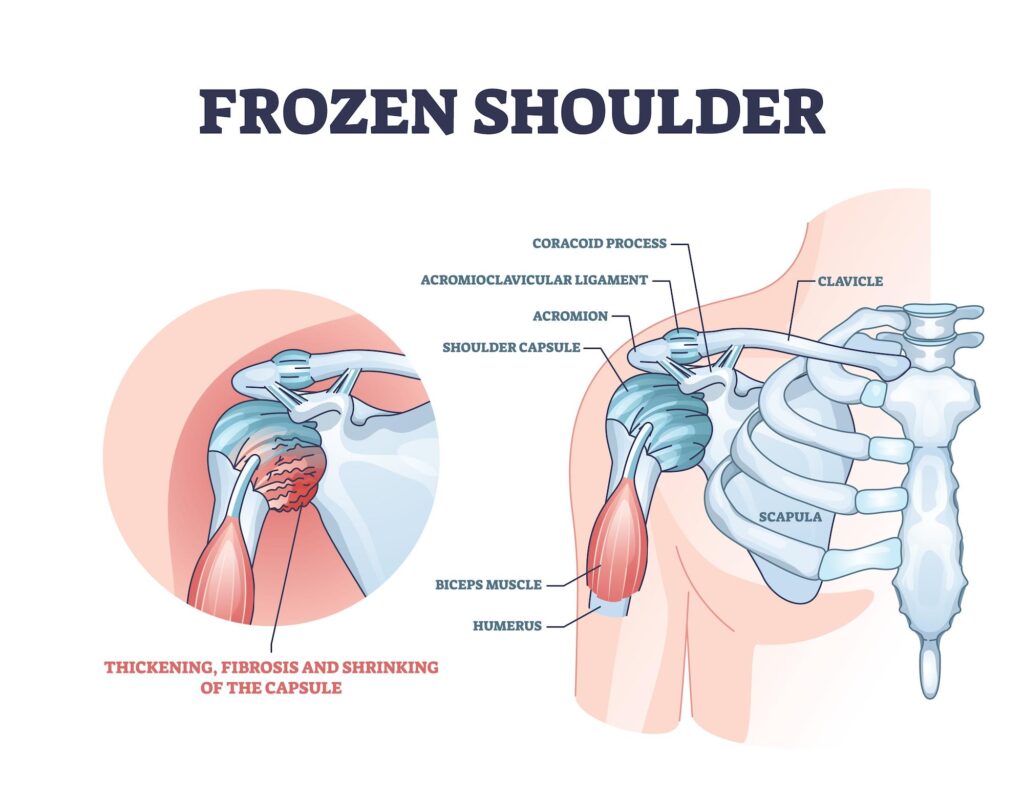If you’re experiencing pain and stiffness in your shoulder joint, you may have frozen shoulder. Also known as adhesive capsulitis, frozen shoulder is a condition that causes significant limitations in movement.
In this post, I will discuss the symptoms, treatment and recovery of frozen shoulder.
What is frozen shoulder and what are the symptoms?

Frozen shoulder is a condition in which the shoulder joint becomes stiff and frozen. The range of motion in the shoulder joint is significantly reduced, making it difficult to move your arm. Although it is not as prevalent as a rotator cuff issues, the discomfort it causes is usually more severe.
The symptoms of frozen shoulder include:
- Pain in the shoulder joint that may radiate down the arm
- Stiffness in the shoulder joint
- Reduced range of motion in the shoulder joint
- Difficulty moving the arm, especially away from the body
What causes frozen shoulder?
The exact cause of frozen shoulder is not well understood. However, it is thought to be related to an injury or inflammation in the shoulder joint. Frozen shoulder can also be a side effect of certain medical conditions, such as diabetes.
Frozen shoulder affects between 3 and 5% of the general population, most often people between the ages of 40 and 60 years.
How is frozen shoulder treated?
The good news is that, in most cases, frozen shoulder will heal on its own without the need for any treatment. The bad news is that it can take a very long time. This causes many patients to seek treatment to shorten the course of this problem.
The goal of treatment for frozen shoulder is to reduce pain and improve range of motion in the shoulder joint. Treatment options include:
Physical therapy: Physical therapy can help improve range of motion and reduce pain. Therapeutic exercises may be used to stretch and strengthen the muscles around the shoulder joint.
Steroid injections: Steroid injections can help reduce pain and inflammation in the shoulder joint.
PRP treatment: Platelet-rich plasma (PRP) injections can help promote healing in the shoulder joint.
Surgery: In some cases, surgery may be necessary to release the frozen shoulder.
What is the recovery from frozen shoulder?
The recovery from frozen shoulder can take several months. Physical therapy is often necessary to regain range of motion in the shoulder joint.
Most people make a full recovery from frozen shoulder without any long-term complications.
If you think you may have frozen shoulder, it is important to see a dedicated shoulder specialist for a proper diagnosis. Treatment for frozen shoulder can help reduce pain and improve range of motion in the affected shoulder.
